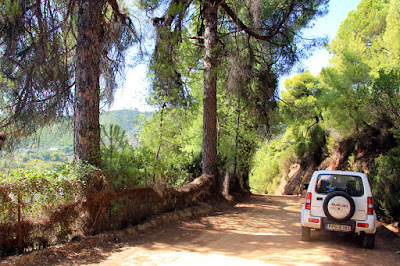Tuesday 10th October. There was a chance of Redwings this morning after a good number were seen in the UK in the last few days, mainly on the east coast. I’d seen a handful of Redwings over the house early on Monday so hoped that Tuesday might be suitable for ringing up at Oakenclough with an opportunity to catch our first Redwings of the autumn. The forecast of an early 15 mph wind, cloud and showers was rather marginal but after some deliberation we decided to go for it on the basis that on a westerly the nets are fairly sheltered, and also on the expectation this might be the only suitable day of the week.
I met up with Andy at 0645 when it was still quite dark and very soon after dawn we caught the first couple of Redwings and then a few more as the morning continued.
We finished at 11.30 with a good mix of 12 species and 51 birds in total which included eight Redwings.
Species and numbers: 16 Goldfinch, 12 Goldcrest, 8 Redwing, 3 Lesser Redpoll, 3 Great Tit, 2 Chaffinch, 2 Blue Tit, 1 Coal Tit, 1 Blackbird, 1 Blackcap, 1 Chiffchaff, 1 Reed Bunting.
Redwing - first autumn/winter
Redwing
We aged and sexed the Reed Bunting as a first autumn/winter male.
Reed Bunting
The single Blackcap proved to be an adult female.
Blackcap
Our catch of Lesser Redpolls was smaller than recent weeks and almost certainly due to the bluster and short, sharp, showers. Below is an adult male.
Lesser Redpoll
The morning’s visible migration was not especially eventful but even as the wind dropped with clearing skies about 10am, any arrival or movement of birds was hardly noticeable. The highlight was the 90+ Redwings we counted in singles, small parties, or the biggest one of 30+ birds which arrived without any obvious directional movement during the cloudy and showery period.
Otherwise our biggest counts came from the number of Goldfinches about in small parties that totalled over 100 individuals. The Goldfinches we caught came mostly from our feeders that are designed to catch mainly Goldfinch, Lesser Redpoll and Siskin.
Others noted this morning: 2 Jays, the first seen or heard here for many months. Also, 8 Pied Wagtail, 1 Sparrowhawk, 1 Raven, 1 + Bullfinch.
Linking this post to Anni's Birding, Eileen's Saturday and Stewart's World Bird Wednesday.
Linking this post to Anni's Birding, Eileen's Saturday and Stewart's World Bird Wednesday.



















































































